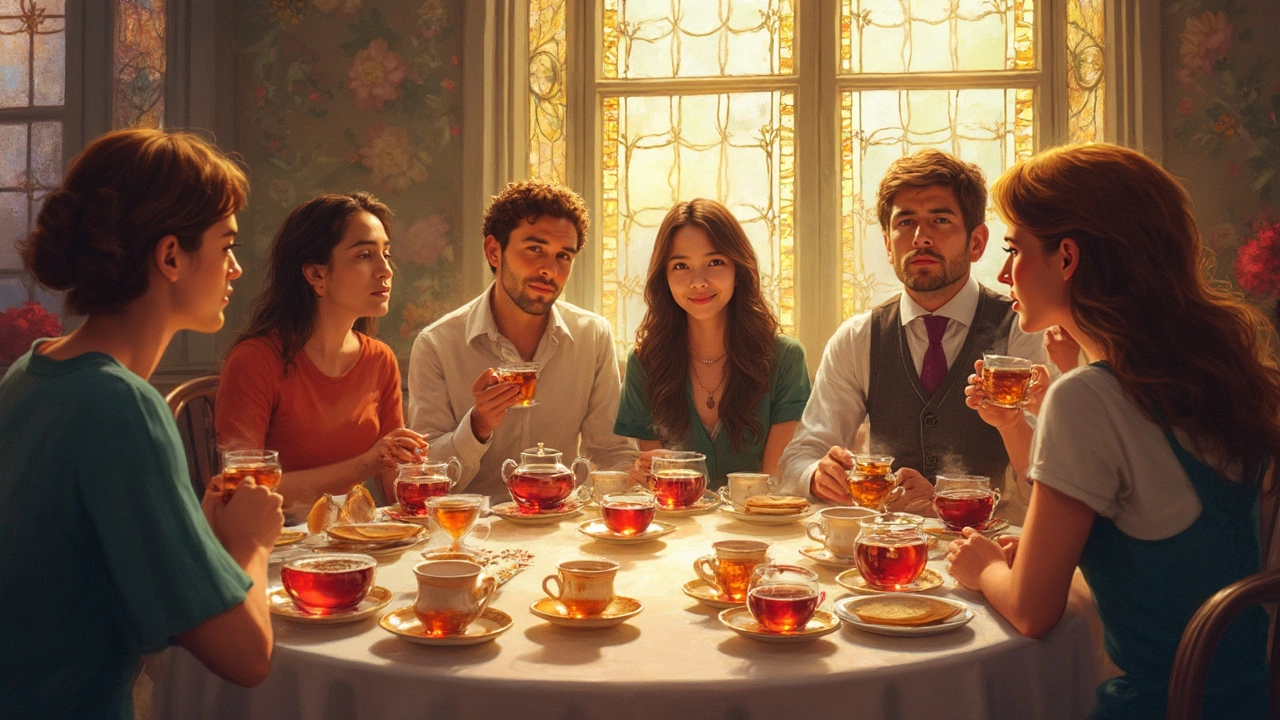Popular Tea: Trends, Tasting Tips & Must‑Try Varieties
If you love a good cuppa, you’ve probably heard the buzz around new tea trends. From silky matcha lattes to smoky lapsang souchong, the world of tea is expanding fast. This guide breaks down what’s hot right now, how to taste tea like a pro, and simple tricks to keep your leaves fresh.
What’s Hot in the Tea World?
First up, the teas that are stealing the spotlight. Matcha stays on top because it’s easy to blend into smoothies, lattes and even baked goods. Pu‑erh is gaining fans for its earthy depth and potential health perks. Floral blends—think jasmine, rose and hibiscus—are perfect for spring gatherings and look great in clear glasses.
Another trend is ready‑to‑drink (RTD) tea cans. Brands are launching low‑sugar, antioxidant‑rich options that feel like a snack instead of a chore. If you’re into something different, try butter tea from the Himalayas—a salty, buttery brew that’s surprisingly smooth.
How to Taste Tea Like a Pro
Ever wonder why some people talk about “notes” and “mouthfeel” when describing tea? It’s the same idea as wine tasting, just with fewer grapes. Start by picking a quiet spot, a clean glass or ceramic cup, and water heated to the right temperature (usually 175‑205°F depending on the leaf).
Take a small sip, let it roll across your tongue, then notice three things: the aroma, the flavor, and the finish. If the tea smells like fresh grass or ripe fruit, that’s a good sign of quality. The flavor can be sweet, bitter, astringent, or umami—don’t be shy about naming it. Finally, does the taste linger or disappear quickly? A long finish often means a higher‑grade leaf.
Pro tip: use a tea tasting guide like the one we posted in our "What to Serve at a Tea Tasting" article. It lists popular teas, snack pairings, and how to set up the tasting space. A simple platter of light biscuits, cheese slices, or fresh fruit works wonders.
Speaking of snacks, the right food can enhance tea flavors. For example, a slice of mild cheese balances a strong black tea, while a few dark chocolate pieces bring out the richness in pu‑erh.
One question we get a lot: Can you drink really old tea? Our "Is It Safe to Drink 10‑Year‑Old Tea?" piece explains that tea does age, but only under strict conditions. If stored in a cool, dark place in an airtight container, some teas—especially pu‑erh—can develop deeper flavors after years. However, most everyday teas lose their pep after a few months, so it’s safest to drink them within a year of purchase.
To keep your tea fresh, store it away from light, heat and strong odors. A ceramic jar with a tight lid works better than a plastic bag. If you buy bulk leaves, divide them into smaller portions and only open one at a time.
Finally, remember that being a tea lover comes with its own slang. Call yourself a teaphile or teaholic and you’ll fit right in at any tea‑centric meetup. It’s all about sharing the joy of a good brew.
Now that you know what’s popular, how to taste, and how to store, go ahead and try a new leaf today. Whether you’re sipping matcha in the morning or winding down with pu‑erh at night, the perfect tea is just a steep away.
Discover the world's most beloved tea, its distinctive characteristics, and why it holds the top spot. Learn about its origin, taste profile, and the unique factors contributing to its popularity. We delve into the art of tea tasting, providing practical tips to appreciate the flavors fully. Whether you're a seasoned tea lover or a curious beginner, this guide will enhance your tea experience.
View DetailsEver wondered what tea flavor captures the hearts of millions worldwide? Join us as we dive into the world of tea tasting and discover the top tea flavor that tops the global charts. From its origins to its widespread appeal, we'll explore why this flavor stands out among countless others. Get ready to learn some interesting tidbits and practical tips to enhance your tea experience.
View Details


